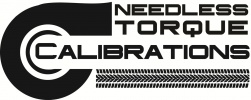Good afternoon,
I have a 1998 Ram 2500 w/5.9 L gasser. The truck has the JTEC PCM, no external TCM, w/46RE trans. I bought the MPVI2 system from HP Tuners to specifically tune this truck. I have succeeded reading and editing the base code. However, there is not a lot of resolution in this controller. For instance, there is no VE table map to edit, there is a spark table map where RPM vs MAP exists, the total spark advance in degrees populates the table. And there is an injector pulse time table map where RPM vs. MAP populated with injector pulse times. My question: how can I dial in a new cam? Where the cam card information is not adjustable by just tuning? These magnum engines have a puny cam, just adding 0.050? and 10 degrees more duration is all I am after? A 467/487 lift @ 0.050? and 208/214 duration with 114 LSA. Ill Try to answer this myself, my engineering background tells me to delay the hysteresis of the injectors from 448 us to lets say 248us, it will energize later than stock, and lengthen the pulse width for the longer duration? Then advance the timing a few degrees until AFR is acceptable? Am I on the right track here? No much in the JTEC to change?




 Reply With Quote
Reply With Quote
